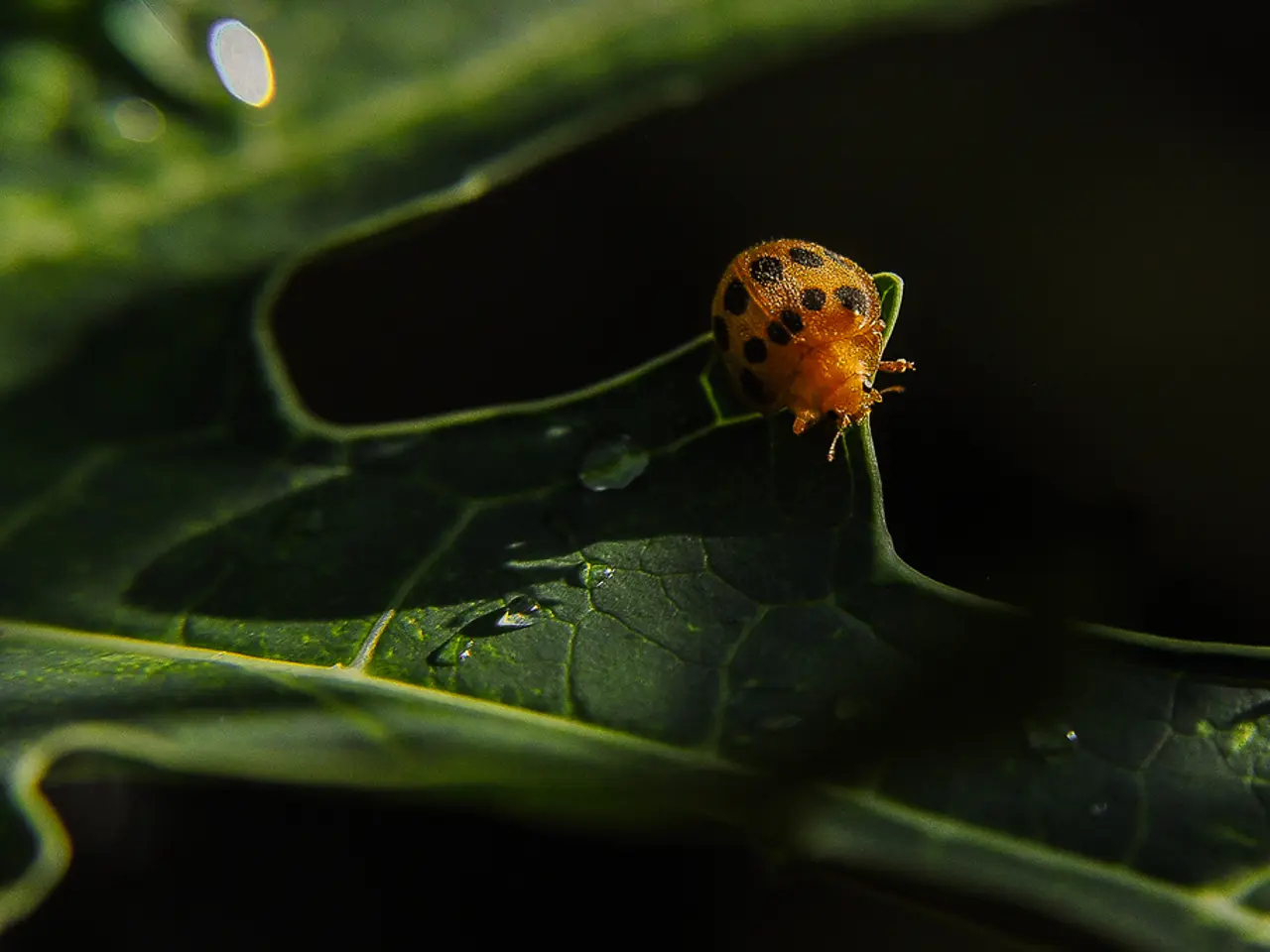Lemon tree leaves falling off: causes explored
Lemon trees, known for their vibrant fruit and fresh aroma, can sometimes experience leaf drop, a phenomenon that can be concerning for gardeners. This article aims to shed light on the various reasons behind lemon tree leaf drop and potential solutions.
One common cause of leaf drop is the infestation of soft scale insects. These tiny pests cover lemon leaves in a sticky substance, leading to leaf drop and reduced tree vigor. Horticultural oils can be used to treat soft scale effectively.
Another issue that affects lemon trees is the Greasy Spot fungus. This disease presents as yellow spots on the upper side of the leaf, which transform into blisters and look greasy. The diseased leaves fall, and fruit set is decreased.
Mal secco, a fungal disease, is identified by pale veins on wilting leaves and silver-grey infected bark. Pruning out diseased branches and using copper fungicides for protection can help manage this condition.
Botrytis rot, a fungal issue, can infect and kill young shoots after prolonged rain in coastal areas. It's essential to monitor your lemon tree for signs of this disease, especially in such conditions.
Tristeza, a virus, causes pale foliage, stunted, yellowing leaves, and leaf drop in lemon trees. This virus spreads via infected grafting material or by aphids.
Lemon trees do not require a period of cold to fruit, but rapid changes in light exposure can cause leaf drop. It's crucial to acclimate plants from indoors to outdoors and vice versa, gradually.
Other common causes of early lemon leaf drop include water stress (either drought or overwatering), nutrient deficiencies (especially nitrogen, magnesium, or iron), and environmental factors like temperature extremes or poor soil conditions.
Boron toxicity in lemon trees can cause leaf tip yellowing or mottling, potentially leading to twig dieback and leaf drop. It's essential to monitor the amount of boron in your soil or fertilizer.
Bacterial Blast causes falling leaves and is recognized by black lesions that appear on the leaves, causing the blades to curl, dry, and drop. Prevention is key in managing this disease.
Anthracnose is another fungal disease that causes premature leaf drop and is identified by leaves and shoots covered with dark spores. Again, pruning and using appropriate fungicides can help manage this issue.
Rapid temperature changes can also cause leaf drop in lemon trees, including a move from chilly outside air to indoor air. It's important to acclimate your lemon tree gradually to changes in temperature.
Citrus Greening, a bacterial disease transmitted by insects, causes yellowing of leaf veins or entire branches. Unfortunately, the only control is prevention.
Citrus rust mite causes small fruit and leaf drop, with mites often moving in in April and peaking in June and July, declining in August and September. Horticultural oil is an effective tool for managing this pest.
Phytophthora, a soil-borne pathogen, can infect citrus trees, causing signs of weakness, slow collapse, or drought stress even when properly watered. Leaves may appear dull, yellow, red, or purple long before fall sets in.
Lemon trees prefer full sunlight, but those grown in containers may experience excess growth with a sunny placement. Move the plant to a site with partial shade to prevent such issues.
Armillaria root rot is another fungal issue that causes lemon trees to wilt, yellow, and drop. It's difficult to treat and experts recommend removing the tree entirely.
Sodium toxicity in lemon trees, caused by high saline water or excessive fertilizer, can look like drought stress and is associated with overall leaf "bronzing" and leaf drop. Monitor your water and fertilizer usage to prevent this issue.
Finally, hail damage can result in scarring on small branches or fruits, shredding leaves, and causing premature leaf drop in lemon trees. Protecting your lemon tree from hail is the best prevention.
In conclusion, understanding the causes of lemon tree leaf drop can help gardeners take proactive measures to maintain the health and vitality of their lemon trees. Whether it's pests, diseases, or environmental factors, there are solutions available to keep your lemon tree thriving.
Read also:
- Impact of Alcohol on the Human Body: Nine Aspects of Health Alteration Due to Alcohol Consumption
- Understanding the Concept of Obesity
- Tough choices on August 13, 2025 for those born under Aquarius? Consider the advantages and disadvantages to gain guidance
- Microbiome's Impact on Emotional States, Judgement, and Mental Health Conditions







